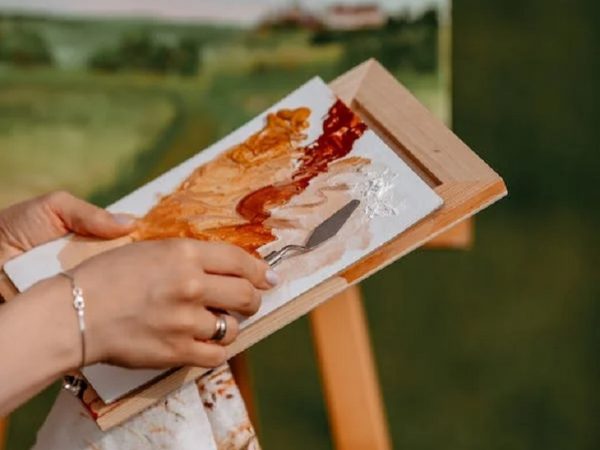29
Jun

Have you ever seen those paintings that feature thickly applied paint and texture? The ones that look like the artist just took a spatula and scooped out great piles of paint onto their canvas? While they may look hastily put together, that couldn’t be further from the truth. It takes great skill and knowledge to create this kind of masterpiece, with a technique known as impasto painting.
And if you want to take advantage of the charmingly rustic and beautiful aesthetic that impasto art can offer, you can certainly begin making your own. All you need is a little bit of creativity and the right set-up – you’ll be well on your way to creating your own version of a living room masterpiece. Why can’t you punch up a room with wall art but have each piece be your own?

For the uninitiated, impasto painting is a technique in which paint is applied very thickly to a surface resulting in textures, reliefs and brushstrokes that are highly visible. This method of painting can create beautiful works with a strong three-dimensional effect, making the artwork look almost sculptural and alive.
Given the thick, heavy nature of the paint application, impasto paintings can take some time to complete. Sometimes, art connoisseurs have mistaken the works for being unfinished or rushed. But don’t be fooled – this is an incredibly valuable way to create art with texture and depth.
Even if the final product might look like it was applied with a spatula, there’s an element of skill that goes into creating an effective painting. The way you use and apply the paint is just as important as choosing the right kind of impasto medium, tools, and painting surface.

Most of us know that paint is not typically thick enough to be used for this kind of technique – the usual consistency is slightly thin. To thicken it up, you’ll need an appropriate acrylic impasto medium which is usually something like a gel medium or texture paste. This will help thicken the paint and give it a more three-dimensional quality, creating great reliefs in your work of art.
When dealing with acrylics, make sure you opt for a heavy-bodied acrylic impasto medium since the nature of these colours is quite fluid and fast-drying. This will ensure that your paint won’t run or become too thin as you work with it, giving you more control over your painting. You add the medium to your paint, usually in a ratio of 2:1 – two parts paint to one part medium.
Even if you’re using oil paint which is generally thick enough to satisfy your needs, you should still consider adding the medium to give any areas that require it a sharper texture. Plus, when it’s applied in greater amounts, it may take a while to dry and you’ll want to use a medium that will speed up the process.
Either way, the type of medium you use is entirely up to your preference and the way it can best complement your work. Cold wax is one of the most popular types of mediums used today, as it offers a great deal of versatility and can be applied in multiple layers to create interesting effects. It has a creamy consistency that is also quite opaque, so you can easily create a wide range of textures with it.
You could also go with Liquin Alkyd, which is a ready-made oil paint medium that helps to speed up the drying time of your work. It’s especially great for those who like to work in multiple layers since it allows for the paint to dry quickly enough between these layers without compromising the surface texture or thickness.
For most painting techniques, brushes will be your go-to applicators. They’re great for everything from blending and colour transitions to creating brushstrokes and marks. You might need something slightly thicker for this technique though, given the rough and heavy nature of impasto painting.
Palette knives, scrapers and sponges can all contribute to the process and provide an interesting, unique texture. You could also use a fan brush in combination with a palette knife to help create some more intricate brushstrokes and patterns. Remember, if you’re using these tools in addition to traditional brushes, they need to be clean and free of any contaminants and dust.

Many seasoned impasto painters prefer a primed canvas for this technique, as it offers you the perfect amount of texture and depth. They normally use a medium-grain canvas, since it’s easier to manipulate and ensure that the paint is not too thick.
For those of you wanting to work in oil, a hardboard painting surface is your best bet. It’s usually made from fibre-filled layers of board that have been sealed with varnish, so you won’t have to prime it. It’s also very sturdy and will not warp or bow as you apply the paint and medium.
Just like with any other type of painting, it’s essential to make sure that your subject and composition are taken into consideration. You will need to figure out the scale of your work and which colours you want to use. You can also experiment with different textures, brush strokes and even abstract elements – oftentimes, a great impasto painting is all about the unexpected.
When you want to build texture and depth, you can consider playing around with light and shadow. This will help emphasise your work’s three-dimensional effect and create a sense of movement. Anything from the way you apply your paint to how you build up its layers can accentuate a work’s dynamism and draw attention to specific elements.